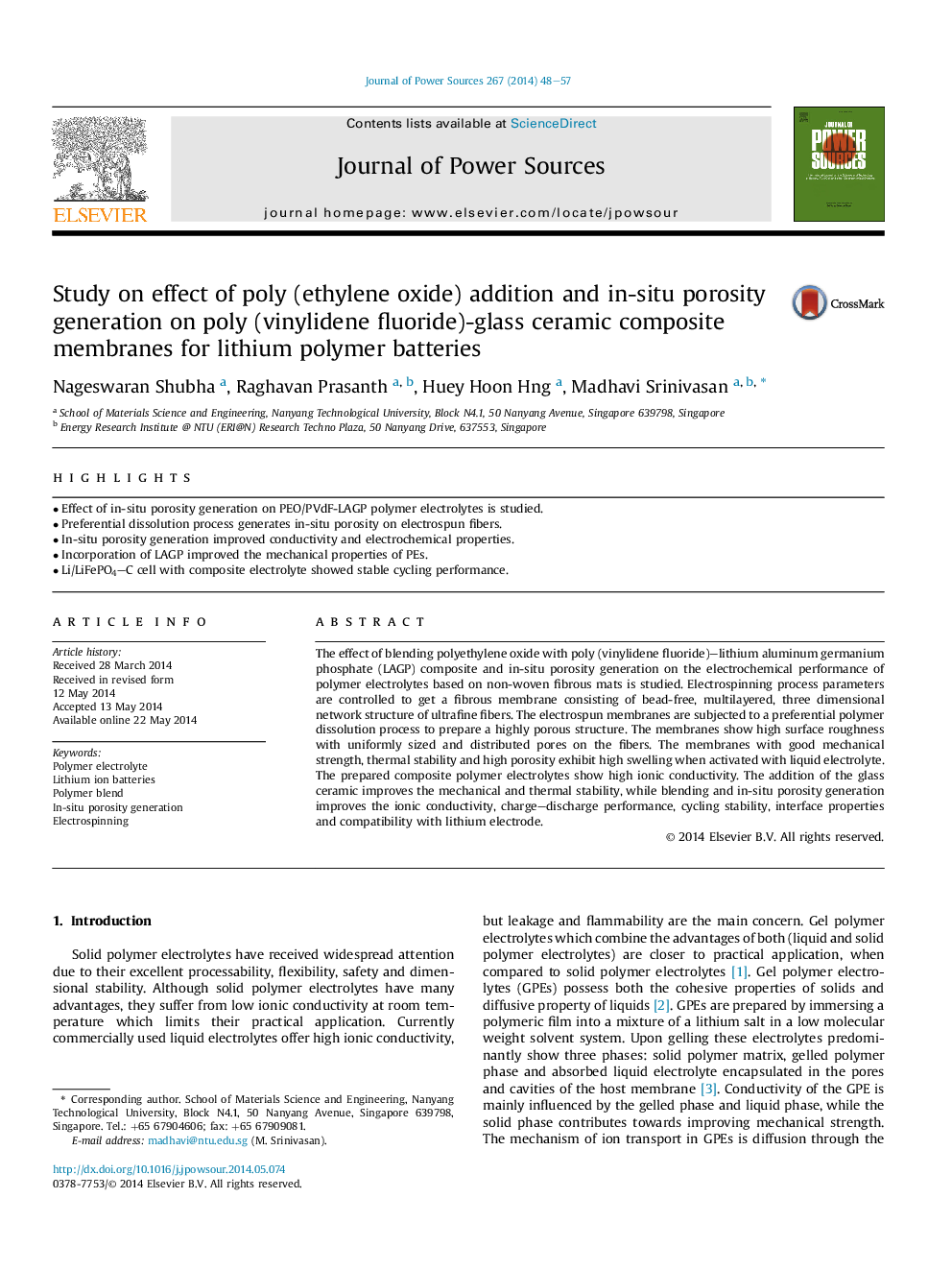| Article ID | Journal | Published Year | Pages | File Type |
|---|---|---|---|---|
| 1286612 | Journal of Power Sources | 2014 | 10 Pages |
•Effect of in-situ porosity generation on PEO/PVdF-LAGP polymer electrolytes is studied.•Preferential dissolution process generates in-situ porosity on electrospun fibers.•In-situ porosity generation improved conductivity and electrochemical properties.•Incorporation of LAGP improved the mechanical properties of PEs.•Li/LiFePO4–C cell with composite electrolyte showed stable cycling performance.
The effect of blending polyethylene oxide with poly (vinylidene fluoride)–lithium aluminum germanium phosphate (LAGP) composite and in-situ porosity generation on the electrochemical performance of polymer electrolytes based on non-woven fibrous mats is studied. Electrospinning process parameters are controlled to get a fibrous membrane consisting of bead-free, multilayered, three dimensional network structure of ultrafine fibers. The electrospun membranes are subjected to a preferential polymer dissolution process to prepare a highly porous structure. The membranes show high surface roughness with uniformly sized and distributed pores on the fibers. The membranes with good mechanical strength, thermal stability and high porosity exhibit high swelling when activated with liquid electrolyte. The prepared composite polymer electrolytes show high ionic conductivity. The addition of the glass ceramic improves the mechanical and thermal stability, while blending and in-situ porosity generation improves the ionic conductivity, charge–discharge performance, cycling stability, interface properties and compatibility with lithium electrode.
